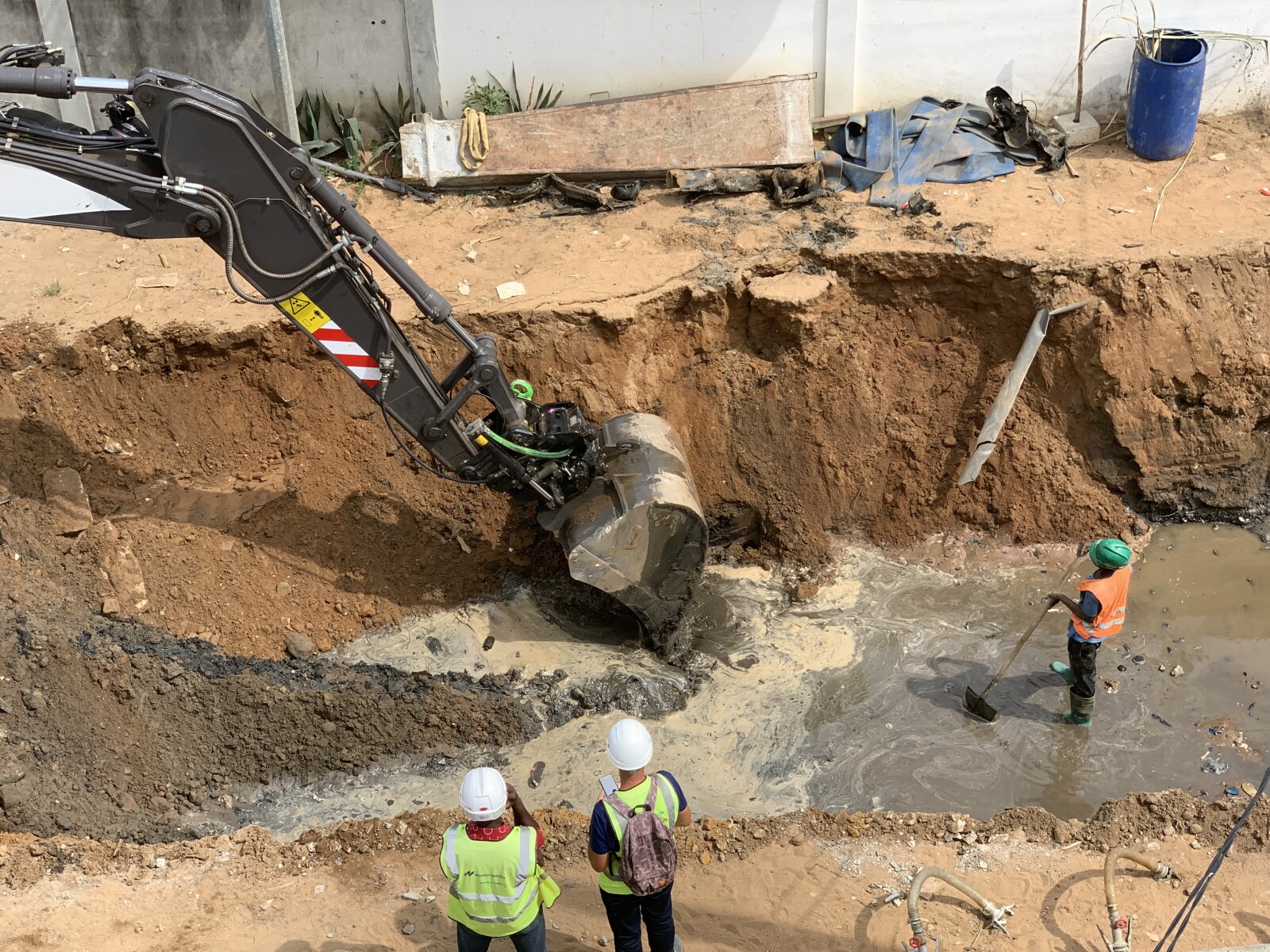9 Most Common Work-Related Injuries and Accidents
Ironically, familiar work environments often harbor unseen risks. This analysis explores the nine most prevalent work-related injuries and accidents, highlighting the significance of preventative measures.

It scrutinizes the responsibilities of both employers and employees, the nature and impact of specific injuries, and the legal complexities surrounding compensation claims.
Moreover, it underscores the necessity of maintaining workplace safety, emphasizing the importance of protective gear and adherence to guidelines.
Key Takeaways
- Soft-tissue and back injuries, slips, trips, and falls, work-related motor vehicle accidents, and falling from high places are among the most common work-related injuries and accidents.
- Over 2.5 million workers suffer non-fatal illnesses or injuries each year, with over 5,000 workers being fatally injured in the workplace annually.
- Workers need to know their rights and employers should create a safe work environment, understanding workers' compensation and seeking help for fair compensation.
- Safety considerations for heavy lifting, keeping workplace floors clear of hazards, and implementing safety measures for work-related motor vehicle accidents and falling objects can prevent injuries and accidents.
Understanding the Nature of Common Work Injuries
Understanding the nature of common work injuries necessitates a comprehensive assessment of their occurrence. These injuries predominantly include soft-tissue and back injuries, slips, trips, and falls, work-related motor vehicle accidents, falling from high places, and injuries from falling objects.
Preventing soft tissue injuries requires provision of ergonomic tools, proper lifting techniques, and regular breaks for employees. An integral component involves understanding workers' compensation, a system designed to provide benefits to employees who suffer work-related injuries or illnesses.
These benefits generally cover medical care, a portion of lost wages, and permanent disability. In the unfortunate event of an employee's death, benefits are available to surviving family members.
Comprehensive understanding of these elements can not only aid in prevention, but also ensure appropriate compensation post-injury.
The Role of Employer and Employee in Workplace Injury Prevention
The prevention of workplace injuries requires the concerted efforts of both employer and employee, with each party having distinct roles and responsibilities to ensure a safe and healthy work environment.
Employer responsibilities include the provision of a safe work environment, proper equipment, and employee training on safety procedures. Furthermore, employers are mandated to adhere to regulations set forth by occupational health and safety bodies.
On the other hand, employees are expected to follow the safety training provided, use the safety equipment appropriately, and report any hazards or unsafe conditions.
Hazards and Injury Prevention in Heavy Lifting
Hazards associated with heavy lifting can lead to severe injuries, hence the essentiality of preventive measures such as proper lifting techniques, use of safety equipment, and adherence to weight-to-worker ratios. It is crucial to understand that heavy lifting, without appropriate mitigation strategies, can result in musculoskeletal disorders, particularly affecting the lower back and shoulders.
- Lifting Techniques: Proper lifting techniques like keeping the load close to the body and lifting with the legs, not the back, can significantly reduce the risk of injuries.
- Safety Equipment: Use of safety equipment like back supports, gloves, and safety footwear can provide necessary assistance and protection.
- Weight-to-Worker Ratios: Implementing weight-to-worker ratios ensures that a worker does not lift objects beyond their physical capacity, therefore minimizing the risk of injuries.
The Prevalence and Impact of Slips, Trips, and Falls
Prevalence of slips, trips, and falls in the workplace signifies a considerable concern, with a significant percentage of disablements attributed to such incidents. These accidents, often resulting from inadequate floor maintenance or insufficient hazard warnings, not only endanger employees' health but also impair productivity drastically.
The detrimental impact of slip and fall injuries on productivity is associated with workers' physical incapacitation, leading to their absence from work. Consequently, attention must be directed towards preventing slip and fall accidents.
Measures encompassing regular inspections, rigorous cleaning schedules, and the application of non-slip flooring and adequate lighting can curtail such occurrences. Furthermore, the deployment of safety guidelines and the fostering of a culture of safety consciousness can drastically reduce the prevalence of these incidents.
Importance of Maintaining Safe and Clear Workplace Floors
Maintaining clear and safe workplace floors is an essential responsibility of employers, as it significantly reduces the risk of slip and fall incidents, thereby enhancing overall occupational safety. The significance of floor maintenance cannot be overstated, as it directly impacts the well-being of employees, productivity, and a company's legal standing.
Regular Inspection: Consistent and thorough inspection of workplace floors for potential hazards such as spills, debris, or damaged flooring aids in preventing slip and fall accidents.
Regular Cleaning: Employing routine cleaning schedules ensures a safer work environment by eliminating potential hazards.
Use of Non-slip Materials: Installation of non-slip flooring materials and use of mats can significantly reduce the risk of slips and falls, enhancing overall safety.
Navigating Work-Related Motor Vehicle Accidents
Navigating through the complexities of job-associated vehicular incidents requires a comprehensive understanding of legal rights, employer responsibilities, and compensation avenues. Traffic accidents rank as the foremost cause of work-related fatalities in the United States. It is imperative to understand that workers who drive as part of their job duties should be rightfully covered by workers' compensation.
Even if at fault, employees injured in work-related car accidents may still be eligible for work related car accident compensation. Furthermore, employers' liability insurance may cover damage claims made by occupants of other vehicles. Legal options for workplace accidents may necessitate seeking third-party injury claims for total compensation.
In severe instances, discussion with a personal injury attorney becomes crucial.
Exploring Third-Party Injury Claims in Workplace Accidents
Exploring third-party injury claims necessitates an understanding that workers injured in vehicular incidents during work hours may need to pursue damages against the other driver. This process involves exploring legal options outside of the traditional workers' compensation system.
Workers may need to file a lawsuit against the third-party responsible for the accident. This is especially true in cases where the workers' compensation does not cover all expenses, such as medical bills and loss of income.
Third-party injury claims could also be explored when the incident involves defective machinery or equipment, which implicates the manufacturer.
Seeking compensation through third-party claims often involves legal complexities, thus requiring the expertise of personal injury attorneys who can effectively navigate this process and increase the likelihood of obtaining full compensation.
The Risk and Consequences of Falling From Heights at Work
Falling from significant heights stands as a prevalent source of severe injuries within the workplace, particularly within the construction industry. This risk amplifies the importance of stringent fall protection strategies, demonstrating a clear correlation between the absence of such safety measures and an increased incidence of work-related accidents. These accidents frequently result in severe physical harm, or even fatal outcomes.
Reinforcing safety measures may include the provision of personal fall arrest systems, safety nets, and guardrails. Furthermore, the implementation of comprehensive training programs can ensure workers are adequately informed about potential risks and appropriate responses.
Hence, a collaborative approach between employers and employees, emphasizing adherence to established safety measures, can significantly mitigate the risk of falls from heights.
Protecting Workers From Injuries From Falling or Shattered Objects
Protective measures should be put in place to safeguard employees from the detrimental impacts associated with falling or shattered objects in the workplace. It is essential to comprehend the significance of protective gear requirements, equipment maintenance and inspection, and safety protocols in minimizing workplace injuries.
- Protective Gear Requirements: Mandatory implementation of safety apparatus such as hard hats, safety goggles, and hard-toed boots can significantly reduce the risk of injuries.
- Equipment Maintenance and Inspection: Regular and thorough inspection of workplace equipment is crucial to identify and rectify any potential hazards that could lead to accidents.
- Safety Protocols: Adherence to industry guidelines and safety protocols can mitigate the risk of accidents.
Through these measures, the incidence of injuries from falling or shattered objects can be effectively curtailed.
Frequently Asked Questions
What Psychological Support Is Available for Workers Who Have Been Injured on the Job?
Various resources are available for psychological support to workers who have been injured on the job. These include counselling services to address injury stigma and post-trauma coping strategies.
Some organizations offer Employee Assistance Programs (EAPs) providing mental health support. Additionally, psychoeducational programs can aid in understanding and managing emotional responses post-injury.
Rehabilitation psychologists play a key role too, helping individuals adapt to their altered physical capacities.
Are There Specific Exercises or Physical Therapy Programs Recommended for Workers Recovering From Common Workplace Injuries Such as Back or Knee Injuries?
Rehabilitation techniques for common workplace injuries, such as those affecting the back or knee, typically involve targeted physical therapy exercises. These exercises aim to restore strength, flexibility, and function in the injured area.
Injury prevention strategies, such as correct lifting techniques and ergonomic workplace adjustments, are also essential to prevent exacerbation of existing injuries and avoid future incidents.
It is recommended for workers to consult with qualified health professionals for personalized rehabilitation and prevention programs.
How Can Employers Create a Safety-Conscious Culture Within Their Organization to Further Prevent Workplace Accidents?
To cultivate a safety-conscious culture within an organization, it is crucial to implement comprehensive Safety Training Methods. These methods should encompass proper lifting techniques, use of personal protective equipment, and prevention of falls.
Additionally, clear Incident Reporting Procedures must be established, encouraging employees to report hazards and accidents promptly. This approach ensures immediate response to potential threats, ultimately reducing workplace accidents.
What Are the Rights of Part-Time or Contract Workers When It Comes to Workplace Accidents and Workers’ Compensation?
Contract or part-time workers retain rights to a safe workplace under Occupational Safety and Health Administration regulations. They are entitled to workers' compensation for injuries sustained while executing job-related duties.
However, the implementation of Contractor Safety Protocols and the extension of Part-Time Workers' Benefits can vary widely depending on the jurisdiction and the specific terms of their employment contracts.
It is essential for such workers to understand their rights and the safety measures provided by their employers.
How Do Workplace Injury Rates and Types Vary Across Different Industries, and Why?
Workplace injury rates and types significantly vary across different industries due to the nature of tasks and environment.
Industries with hazardous environments, such as construction and manufacturing, often report higher injury rates, especially from falls and contact with equipment.
Industry-specific safety measures, including regular safety training and use of protective gear, can mitigate these risks.
The effectiveness of protective gear, however, is contingent upon proper use and maintenance, significantly influencing injury types and rates.

This post has been generated by AI and was not reviewed by editors. This is Not legal advice. Please consult with an attorney.




